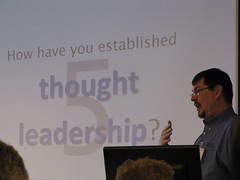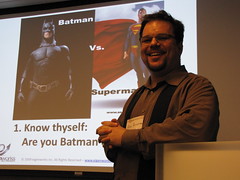I had a Motorola Razr for the last two years and had a great experience with tan inexpensive Motorola H505 bluetooth headset for hands free voice dialing. To place a call I could simply turn on the headset, and press the call button on the headset. It would give a voice prompt, "Say a command." To which my usual reply was "call home" or "call 111 222 3456". The system would then reply, "did you say call _blank_?" with the _blank_ filled in with my request, and the target number was correctly recognized most of the time.
Here is my initial experience with the voice dialer in a nutshell:
In three days of playing around, I don't think I've once gotten the voice dialer to recognize the contact I'm trying to call. I've tried speaking both names and numbers with the same results, neither works. Here is a video clip I recorded, you be the judge.
Bluetooth integration is another big disappointment. I was able to get the headset to pair with the phone, but I couldn't get it to do anything. Turns out that you need to press the bluetooth button which comes up on screen after you make the call from the handset, and then press the call button to get audio on the headset. Receiving a call with the blue tooth headset sort of works. The headset provides a ring, If I press the call button on the headset while the call is ringing, the call connects to the phone, but not to the headset. I have to press the bluetooth key on the call display and press the call button again to hear audio in the headset. I can end the call with the call buton from the headset. (at least something works....) Kind of defeats the purpose of hands free doesn't it?
I wonder if Motorola/Verizon/and Google will be hit with a rash of liability suits based on people crashing their cars while driving using this "so called" hands free option.
Here is a direct quote from the Motorola support site on Bluetooth and Voice Dialing with the new Android. (last update Nov. 23)
I thought I would be writing high praise for this new "toy." Don't get me wrong, there is some really cool stuff on the Android, but it has a very long way to go in terms of maturity. I'm not usually a bleeding edge technology adopter, but I'm trying to embrace change.More about Bluetooth Voice Dialing
- Droid supports one-touch voice dialing and full Bluetooth voice conversations.
- It does not support hands-free dialing via Bluetooth, and Motorola is aware that it does not.
- On Droid, you can answer a call or initiate the 'last dialed call' by pressing and holding the call button on your Bluetooth headset.
- Voice dialing cannot be initiated from a headset; you must turn it on from the phone.
Will there be an update?
- We are currently evaluating possible solutions for providing voice dialing over Bluetooth. The plan for Android phones is to continue to improve the consumer experience through software updates.
- Some owners have found applications that meet their needs in the Applications Market. Though Motorola does not recommend or support specific third-party solutions, you may want to regularly check the new apps offered in the Android Market for additional dialing options.













